The Kayland Grand Tour GTX is a trekking boot, rather than an out-and-out mountaineering boot, but it is sturdy enough to be used across the seasons. It can take a C2 semi-automatic crampon, though the toe is noticeably more flexible than most winter boots, so we’d only really recommend them for occasional crampon use.
Still, for a lot of winter hillwalkers, that will do the job just fine – and without a crampon fitted these boots also offer excellent out-of-the-box comfort, to the extent that you could happily use them all year round.
Pros
- Lightweight
- Accommodating fit
- Out-of-the-box comfort
Cons
- Not the warmest
- Too flexible for technical use
| Waterproof lining: | Gore-Tex Extended Comfort |
| Upper: | <strong> </strong>Suede with microfibre inserts, rubber and TPU rand |
| Sizes: | Men’s UK 6-12.5, women’s UK 3-8.5 |
| Weight: | 540g per boot (UK 9) |
That’s thanks to an accommodating fit, a plush ankle cuff and a cushioned sole unit with a pronounced rocker that soaks up long miles. The hiking-focused outsole delivers solid traction on both wet and dry surfaces too, though it lacks a climbing zone under the toe, reflecting its walking bias. Nor is the boot stiff enough to front point in, which limits its climbing ability in crampons.
It isn’t the warmest boot for cold conditions either. On the flipside, this increases its versatility for milder weather, as it isn’t too hot or sweaty for spring-through-autumn hillwalking. And when it comes to price, it undercuts most of the competition, without sacrificing overall quality.
Lastly, it’s impressively light for a B1 boot. Overall, we still think it’s a good value buy if you’re looking for a four-season hillwalking boot that can take a crampon for days when there’s snow and ice on the summits. But look elsewhere if you are planning to tackle more challenging winter scrambles and graded climbs.
Design and features
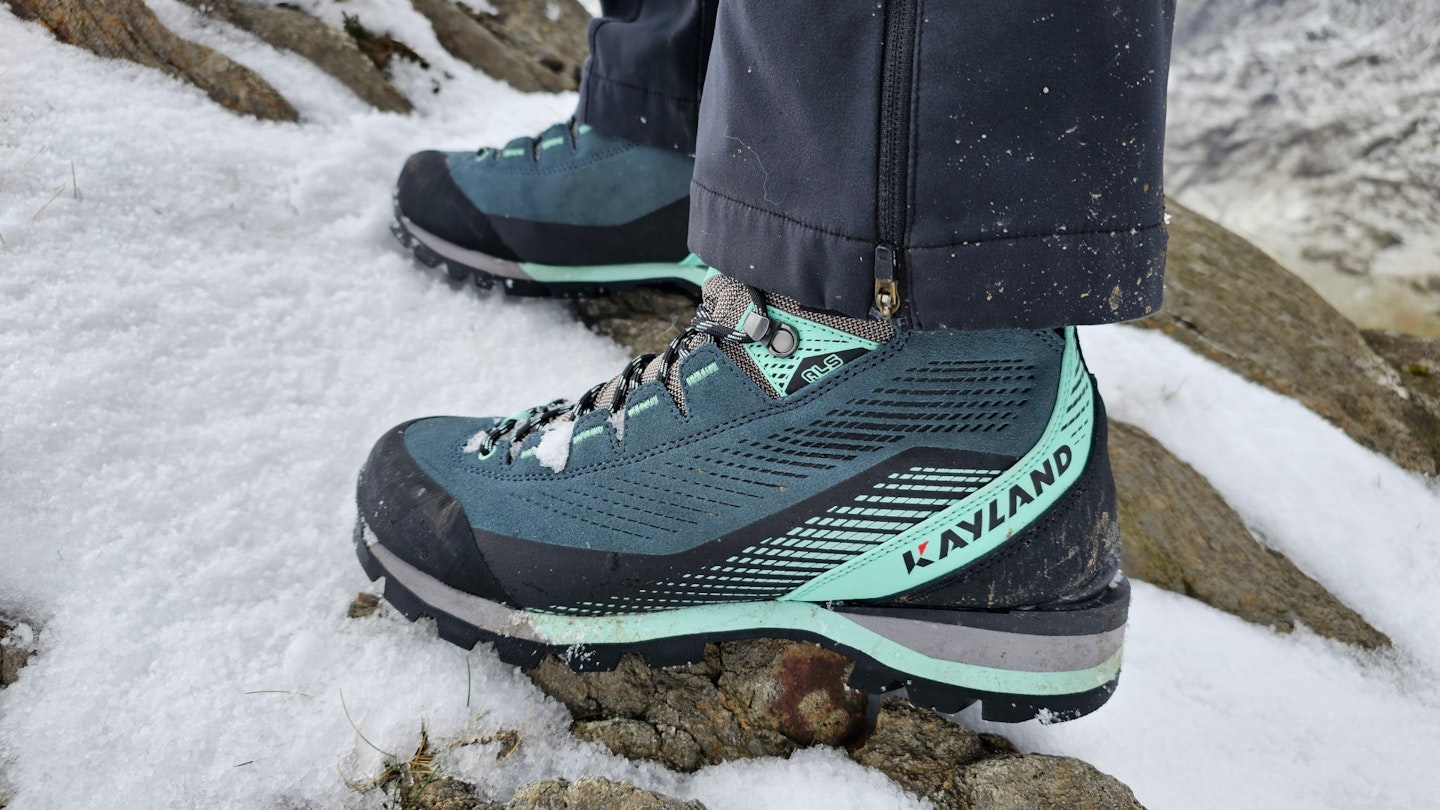
Kayland is an Italian bootmaker. Though not as well-known as big-hitting rivals like Scarpa or La Sportiva, the brand has actually been around since the 1970s. The company was bought out in 2013 and now manufactures a wide range of outdoor footwear, ranging from everyday walking and hiking shoes through to technical mountaineering boots. They’re available from various online retailers (mostly based in the EU, but with a few UK sellers too).
The Grand Tour GTX comes in both men’s and women’s fits. It is classed as a backpacking boot rather than an out-and-out mountaineering boot but is sturdy enough to be used across the seasons, at least in the UK. It also features a moulded polypropylene insole board, plus a heel welt that enables you to fit C2 semi-automatic crampons.
Stiffness is medium overall and the toe in particular is noticeably more flexible than most winter boots, so we’d only really recommend them for occasional crampon use, such as encountering patches of hard-packed snow or ice on moderately inclined mountain tracks and paths. Still, for a lot of winter hillwalkers, that will do the job just fine – and without a crampon fitted these boots also offer excellent out-of-the-box comfort, to the extent that you could happily use them all year round.
The uppers are made from split suede leather with synthetic fabric inserts, plus a sturdy toecap and a TPU overlay for a little added protection and durability. We’d hesitate to describe this as a proper rand, since it is very thin, but it should fend off light scuffs and scrapes. There’s also an angled heel counter to protect the back of the boot and add some lateral stability on uneven ground. The boot has a Gore-Tex extended comfort lining, which is Gore’s most breathable footwear membrane. It’s normally used in warm weather footwear when you want waterproof performance but minimal insulation, which again points to the fact that the Grand Tour is not a dedicated winter boot, but more of a general all-rounder.
The ankle collar is plush and nicely padded, with a slight Achilles cutaway that offers good mobility and soft comfort. There’s handy rear pull tab too. The top of the tongue is also well padded, though less so under the laces. We were conscious of a little pressure when tightly laced, though a thick sock helps here. And fortunately, a locking lace hook enables you to dial in the fit around the ankle without exerting too much pressure across the lower foot.
Underfoot, a spongy foam insole provides good out of the box comfort, though it compresses fairly quickly after a longer period of wear. The sole unit isn’t the thickest but provides decent cushioning. A pronounced rocker encourages a rolling gait, and this is a comfortable boot over long miles. The outsole is a hiking-focused Vibram Tork pattern, made from an XS Trek rubber compound that feels surprisingly tacky. You get great traction on both wet and dry surfaces, but we wonder whether it might wear more quickly than harder mountaineering outsoles.
The Grand Tour also lacks the climbing zone under the toe that is generally found on more technical boots. As such, this boot doesn’t edge or smear as well as some, reflecting its walking bias over scrambling or climbing use.
Performance and comfort
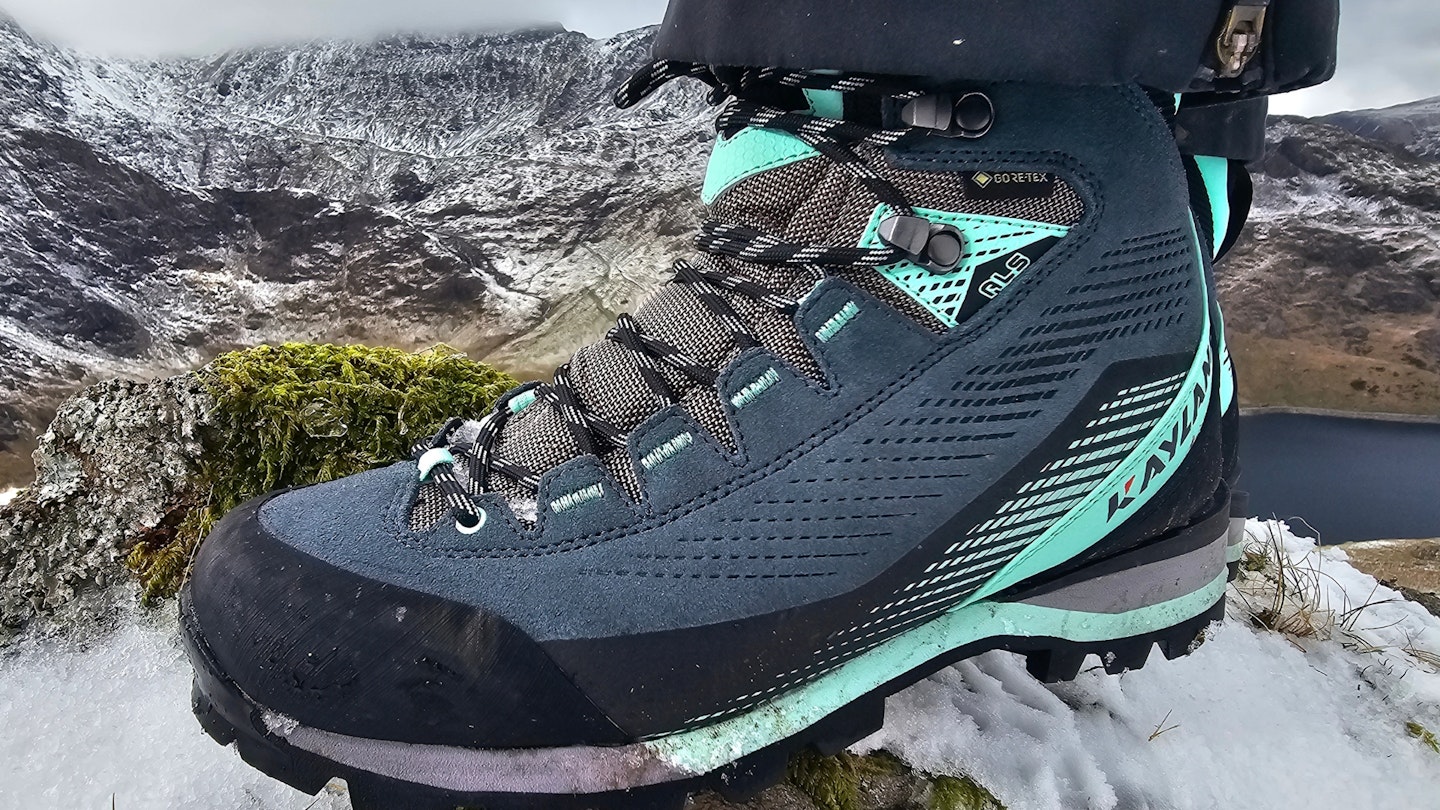
The Grand Tour GTX is built on Kayland’s ERGO tech last, which is a little broader and more forgiving than many alpine-style boots. The forefoot and toebox in particular are both generous in width, allowing plenty of room for toes to splay when walking.
It makes for an accommodating fit for long, high-mileage days. In fact, of all the winter boots we tested in 2024, this was amongst the most comfortable – though part of that, of course, is because it’s far more flexible than a dedicated winter boot.
The sole flex is more like a B1 than a B2, despite the fact that you can technically fit it with a C2 semi-automatic crampon, thanks to the rear heel welt. It feels reasonably secure, but the boot isn’t stiff enough to front point in, which limits its climbing ability to easy and moderate slopes.
So, when it comes to performance, it isn’t as capable as a true mountaineering boot or even a hybrid alpine/scrambling boot– but it isn’t far off some of the more hiker-friendly all-season models on the market, like the Hanwag Makra Pro or even the Danner Crag Rat Evo.
It is worth noting that this isn’t the warmest boot for winter conditions either though – unlike those Hanwag and Danner models. On the flipside, this arguably increases its versatility for milder weather, as it isn’t too hot or sweaty for spring-through-autumn hillwalking. Only in high summer might you want something even lighter, but in those temperatures many walkers would switch to a low-cut approach or trail shoe anyway.
Sustainability
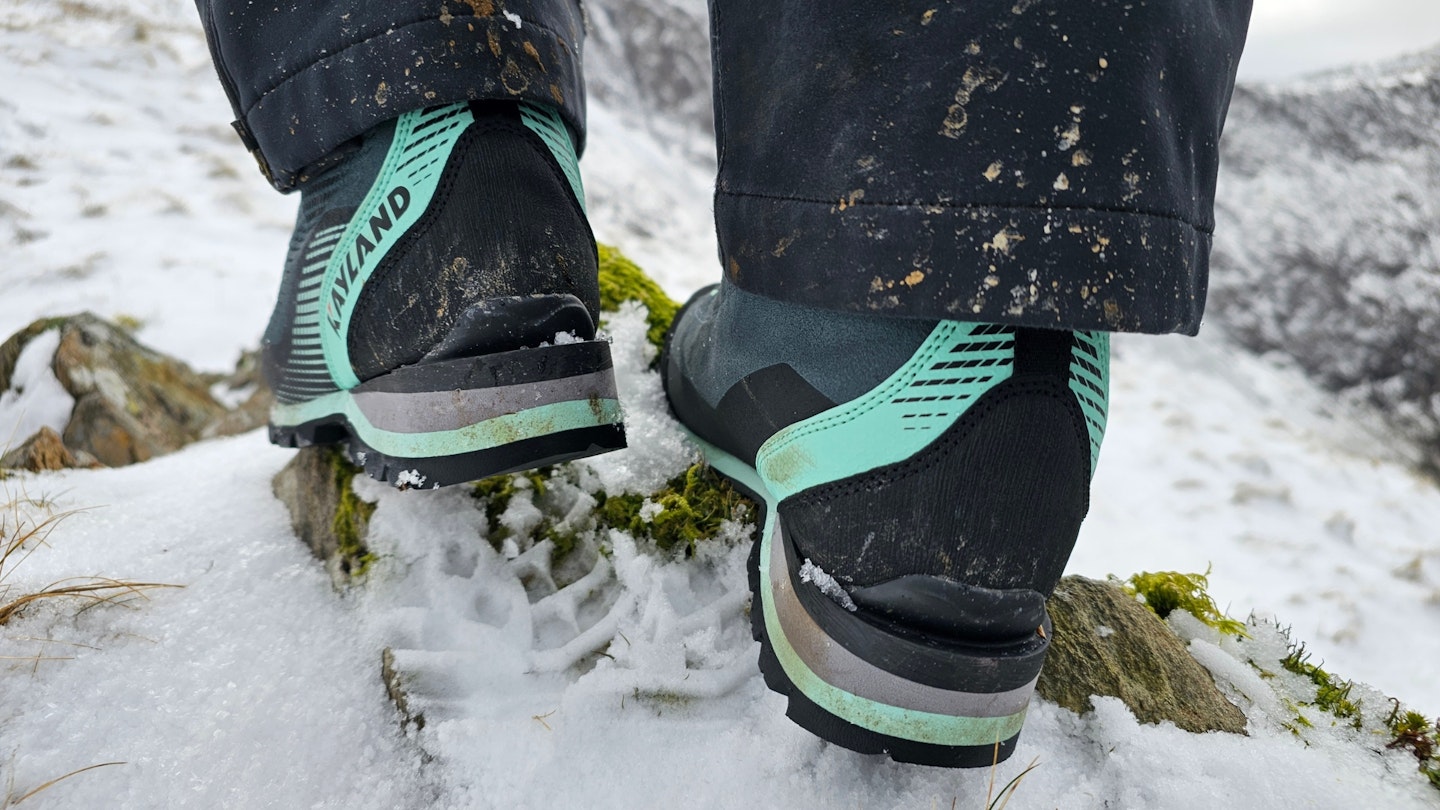
Kayland’s statements on sustainability are arguably a little misleading. Their website states that: “We manufacture our shoes in Europe, significantly reducing the environmental impact related to transport. This choice not only supports local economies, but also guarantees high standards of quality and workmanship”. However, this particular boot is made in China, at least according to the product label.
They also state their production is 100% powered by renewable energy and that 80% of this energy is self-produced, thanks to the installation of solar panels, while the remaining 20% comes from Green certified suppliers. Presumably, however, that only applies to their European factories, not those in the Far East.
They do state that all the leather used in their footwear come from a controlled supply chain. In addition, all leathers used are byproducts of the meat industry. But there is no mention of any LWG (Leather Working Group) certification or similar in this regard.
All packaging used is eco-sustainable, made from recycled and fully recyclable materials.
Price and competition
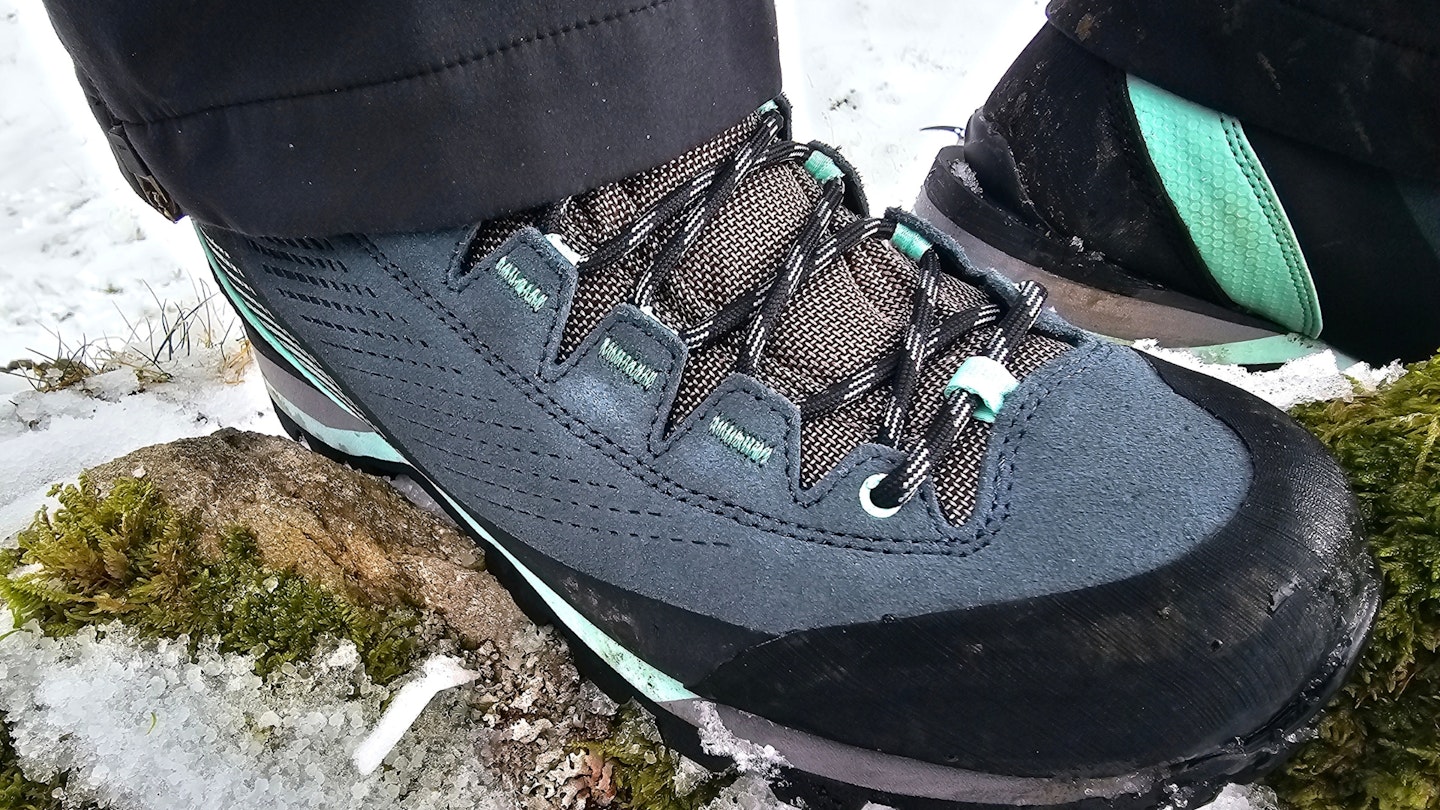
Here’s where the Kayland Grand Tour GTX really shines. With a UK RRP of £180, it significantly undercuts most of the competition on price, without sacrificing overall quality. It was the cheapest boot in our 2024 crampon-compatible winter boots test by some margin, and is also priced lower than many hybrid alpine/scrambling boots.
It's also a great boot for big hill and mountain days across the seasons, because it’s surprisingly light for a B1 boot. The only cramponable boots that really come close on the scales are the Danner Crag Rat Evo and the Salewa Ortles Powertex Mid, but at £370 and £275 respectively, both are far more expensive.
All in all, we think it’s a great value buy if you’re looking for a four-season leather hillwalking boot that can take a crampon for occasional winter adventures when there’s snow and ice on the summits. But look elsewhere if you are planning to tackle more challenging winter scrambles and graded climbs.
Verdict
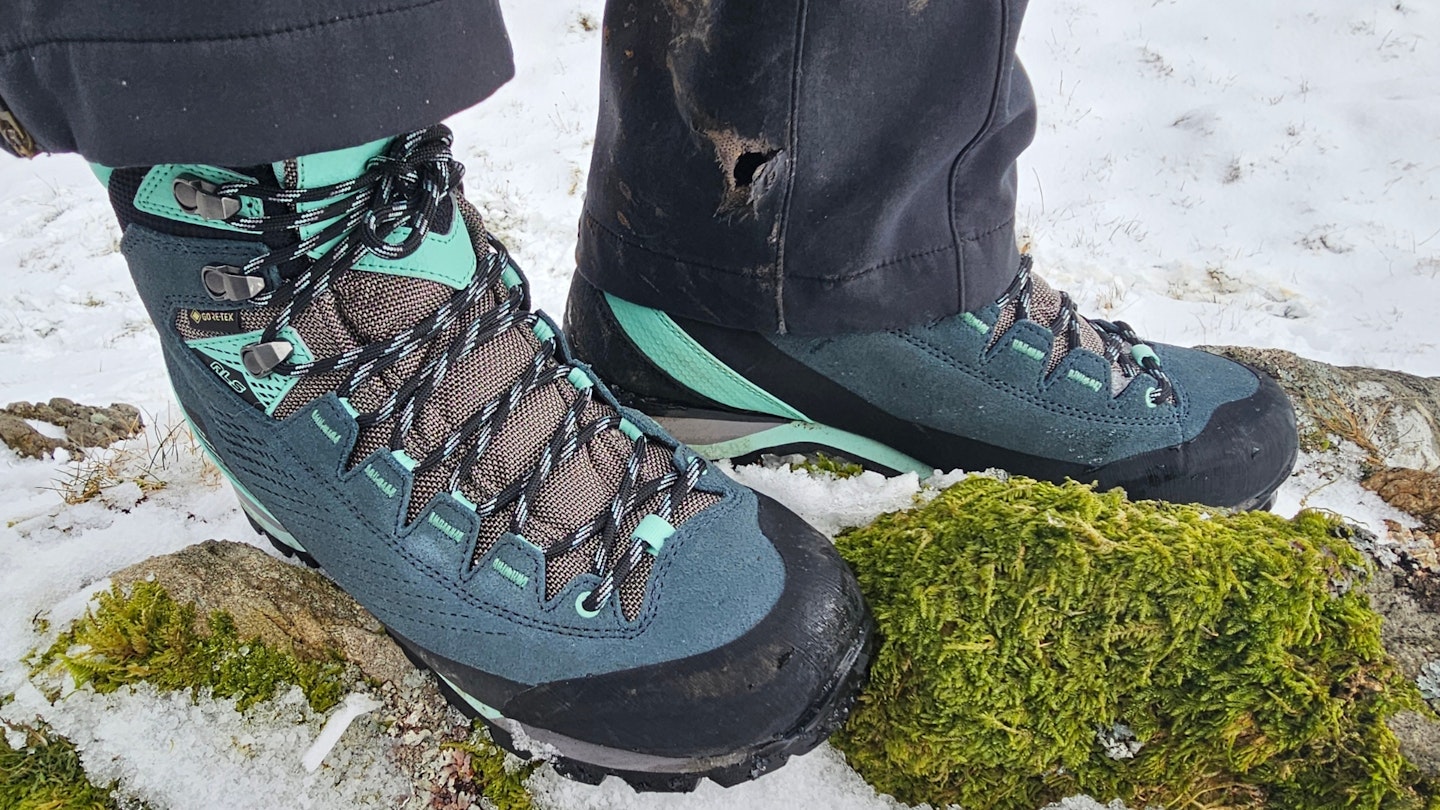
A lightweight four-season hillwalking boot with an accommodating fit and the ability to take a crampon in winter, though its relatively flexible sole and lack of insulation limit its use to occasional cold-weather days.
About the author
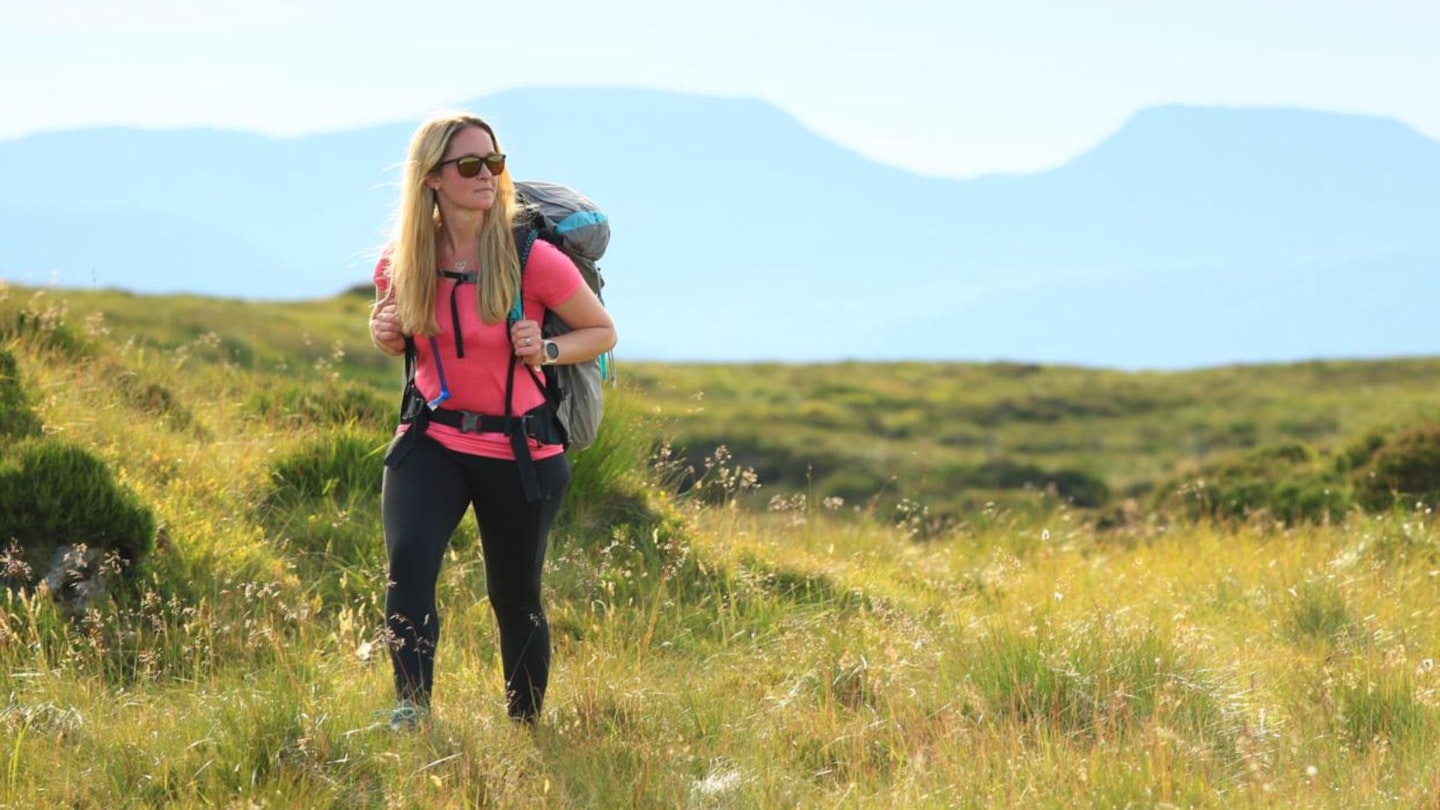
Ellie lives and works in Eryri (Snowdonia), where she spends her time roaming the hills and putting kit through its paces. As a big fan of long-distance trails, she’s ticked a fair few off in the UK including the Pennine Way, Cambrian Way, West Highland Way and Great Glen Way. She’s also hiked in Iceland, the US, Hawaii and New Zealand.
Ellie loves multi-day walks with wild camps but believes it’s almost always worth carrying a little bit of extra weight to be able to enjoy cooking up a storm in the hills. More often than not you’ll also spot her wine pouch poking out of the side pocket of her pack.
She really feels the cold in the hills, so particularly likes to test women’s gloves, insulated jackets and warm sleeping bags.



